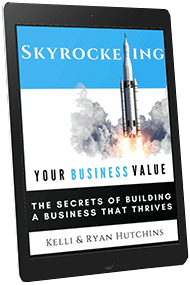
How to Value a Steel Mill
Businesses in the iron and steel manufacturing industry produce various metals including ferroalloys, steel, and pig iron. IBIS World notes that there are approximately 278 steel mills throughout the United States. Together, these businesses generate over $17.5 billion in revenue each year. As such, buying, growing, or selling a steel mill can be lucrative. Keep in mind, that the iron and steel manufacturing industry is extremely competitive. To succeed, it is beneficial for operators to learn how to value a steel mill.
To learn how to value a steel mill, it is best to obtain a business appraisal. During a business appraisal, a valuation expert may discuss the strengths and weaknesses of your steel mill. Additionally, you will learn the fair market value of a steel mill. This information allows you to take the next steps to increase the value of a steel mill you are buying or selling.
As a professional business appraiser, Peak Business Valuation values steel mills on a regular basis. We are happy to provide you with a business appraisal for a steel mill. In addition, Peak can answer any questions you have on how to value a steel mill. Start today by scheduling a free consultation with Peak Business Valuation below!
How to Value a Steel Mill
When valuing a steel mill, valuation experts consider various business valuation approaches. At Peak Business Valuation, our business appraisers often use the market approach and/or the income approach to value a steel mill. Each approach provides a different perspective on the value of a steel mill. As such, business appraisers will determine the best valuation method as part of a business appraisal. This can include using a combination of business valuation approaches.
Valuing a Steel Mill Using the Market Approach
The market approach is common when valuing a steel mill. To understand this valuation method, think about the real estate valuation process. Real estate appraisers consider similar homes that recently sold in the area when valuing a property. This helps them calculate the fair market value of the property. When using the market approach to value a steel mill, business appraisers look at similar businesses that recently sold. If the company is privately owned, they use private transaction databases to gather information.
Multiples for a Steel Mill
Valuation multiples are an integral part of the market approach. Multiples are financial ratios that measure the value of a steel mill based on various metrics. Some common metrics are cash flow, sales, and earnings. To determine the valuation multiples for a steel mill, valuation analysts apply the appropriate NAICS or SIC code. In the following section, we highlight SDE, EBITDA, and REV multiples for a steel mill.
SDE (Seller’s Discretionary Earnings) Multiples for a Steel Mill
- The SDE multiple assesses the seller’s discretionary earnings of a steel mill. This is a common valuation multiple in small business valuation.
EBITDA Multiples for a Steel Mill
- EBITDA multiples measure the earnings before interest, taxes, depreciation, and amortization of a steel mill. This indicates the return on investment (ROI) a steel mill can generate.
REVENUE or SALES Multiples for a Steel Mill
- REVENUE or SALES multiples measure the value of a steel mill in relation to the total amount of sales it generates.
To learn more on how to value a steel mill using the market approach, see Valuation Multiples for a Steel Mill.
Valuing a Steel Mill Using the Income Approach
Another common valuation method for valuing a steel mill is the income approach. The income approach measures a steel mill’s income potential. In addition, this valuation approach considers the risks associated with buying, expanding, or selling a business. Below, we highlight a few common risks in the iron and steel manufacturing industry.
-
- Financial Performance: Financial conditions can fluctuate frequently in the iron and steel manufacturing industry. To succeed, steel mills need strong financial planning and budgeting skills.
- Competition: This industry is dominated by 5 major players. As such, operators need to differentiate from these competitors to succeed.
- Location: The location of a steel mill plays an important role in its success. It is best for steel mills to locate near key markets such as construction and automotive industries.
- Machinery and Equipment: Steel mills require a variety of large machinery and equipment to process metals. It is vital to secure quality and reliable steel mill machinery and equipment.
Methods to Value a Steel Mill Using the Income Approach
There are several variations of the income approach. The most common income approaches are the capitalization of cash flow method and/or the discounted cash flow method. Both of these methods assess the earning potential of a steel mill. The following paragraphs discuss how to value a steel mill utilizing the capitalization of cash flow method and/or the discounted cash flow method.
Capitalization of Cash Flow Method
The capitalization of cash flow method is ideal if your steel mill has a long and stable history. When using the capitalization of cash flow method, valuation analysts determine a reasonable amount of income for one period. The income is then divided by a capitalization rate which indicates the return on investment an investor can expect. The capitalization of cash flow method also considers the risks that may prevent investors from meeting expected earnings. We discuss a few of these risks above.
Discounted Cash Flow Method
The discounted cash flow method is best for steel mills with strong financial histories and/or predictable forecasts. This method involves projecting future earnings over a 3-5-year period. Then, a valuation expert applies a discount rate rather than a cap rate. The discount rate calculates the value of earnings by taking the time value of money into account. Please note, that the discounted cash flow method is less common because it relies on future earning estimates which can be inaccurate.
Summary
Whether you are looking to buy, grow, or sell a steel mill, it is helpful to understand how to value a steel mill. There are a variety of common business valuation methods for valuing a steel mill. To learn which method is best for your steel mill, receive a business appraisal. As part of a business appraisal, you will learn the fair market value of a steel mill and the associated strengths and weaknesses. With this information, you can begin to maximize the value of a steel mill.
Peak Business Valuation, business appraiser, is here to assist! At Peak, we work with steel mills across the country. We are happy to provide you with a business appraisal for a steel mill you are buying or selling. In addition, Peak can discuss any inquiries you may have on the value of a steel mill. Schedule your free consultation below to get started!
For more information see Valuing an Iron and Steel Manufacturing Business, Valuation Multiples for Iron and Steel Manufacturing, and Value Drivers for an Iron and Steel Business.
